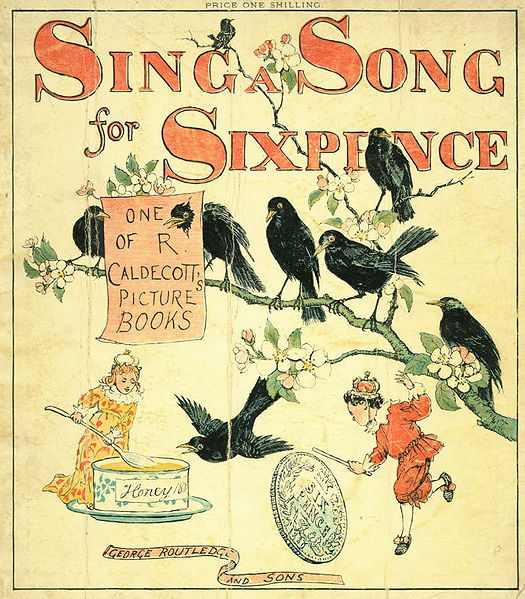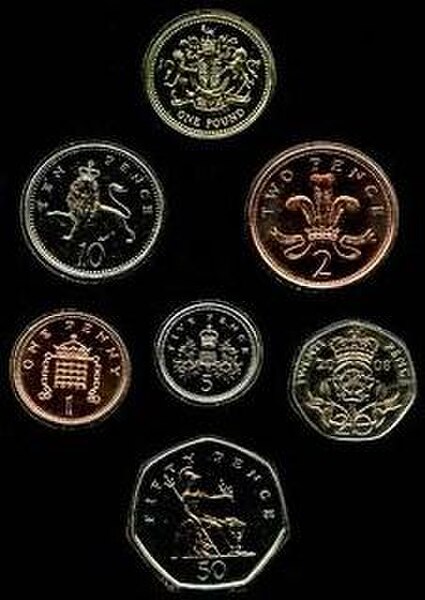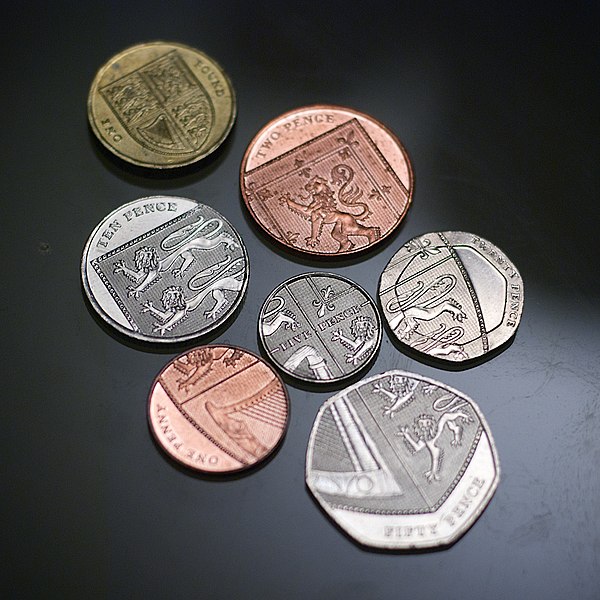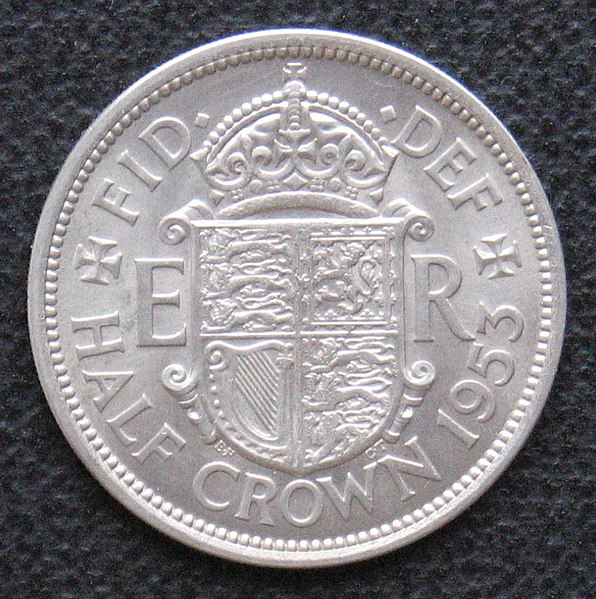The British sixpence piece, sometimes known as a tanner or sixpenny bit, was a denomination of sterling coinage worth 1⁄40 of one pound or half of one shilling. It was first minted in 1551, during the reign of Edward VI, and circulated until 1980. The coin was made from silver from its introduction in 1551 until 1947, and thereafter in cupronickel.
Sixpence of Queen Elizabeth I, struck in 1593 at the Tower Mint
1887 sixpence showing the simpler reverse of SIX PENCE in the middle with Queen Victoria depicted on the obverse
Cover illustration for Randolph Caldecott's picture book Sing a Song for Sixpence (1880)
Coins of the pound sterling
The standard circulating coinage of the United Kingdom, British Crown Dependencies and British Overseas Territories is denominated in pennies and pounds sterling, and ranges in value from one penny sterling to two pounds. Since decimalisation, on 15 February 1971, the pound has been divided into 100 (new) pence. Before decimalisation, twelve pence made a shilling, and twenty shillings made a pound.
Examples of the standard reverse designs minted until 2008. Designed by Christopher Ironside (£2 coin is not shown).
The Royal Shield formed by six UK coins, with the £1 coin depicting the whole of the shield.
1981 commemorative twenty-five pence coin, celebrating the marriage of Prince Charles and Lady Diana Spencer.
Half crown, 1953







